Dracaena Sander: features and subtleties of care
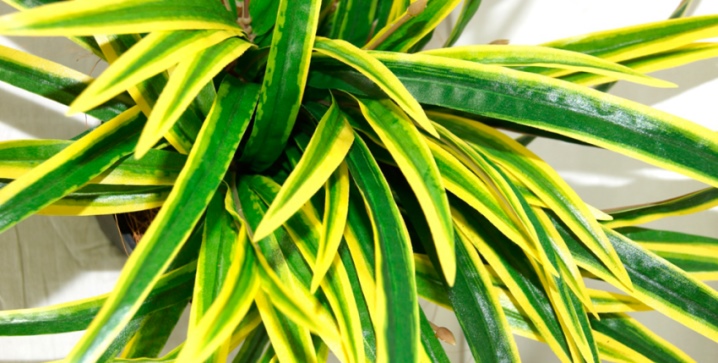
The most famous houseplant among flower growers around the world is Dracaena Sander. It looks like bamboo, but differs from it in its general properties. The flower is easy to care for, so it is easy to grow it yourself in a house or apartment, for this you just need to follow all the transplant rules, water and fertilize in a timely manner.
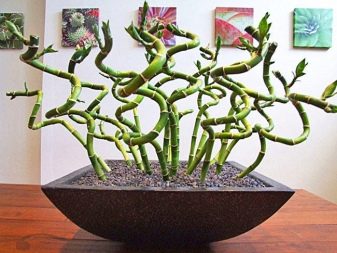
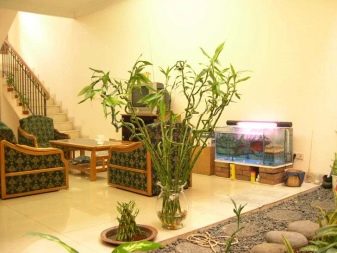
Peculiarities
Dracaena Sandera belongs to the family of indoor palms in terms of its species characteristics. This plant is also often called "lucky bamboo", since according to the teachings of Feng Shui, the flower is an unusual source of family happiness. Dracaena of this species is known in all countries, therefore it can be found in almost all corners of the world.
Many growers prefer to grow this indoor flower in apartments, not only because of its beneficial effect on the home atmosphere, but also because it is easy to care for. This plant does not need special care conditions and is resistant to diseases.
Inexperienced gardeners often confuse him with ornamental bamboo, but in fact Sandera is significantly different from him in both external and varietal characteristics, and the technology of growing both plants is different.
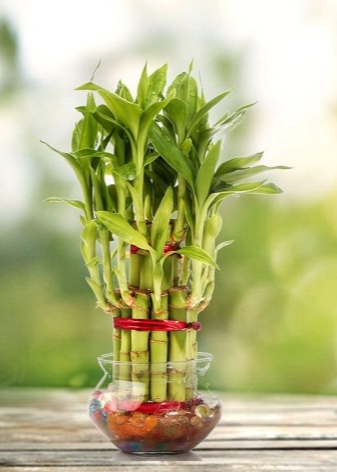
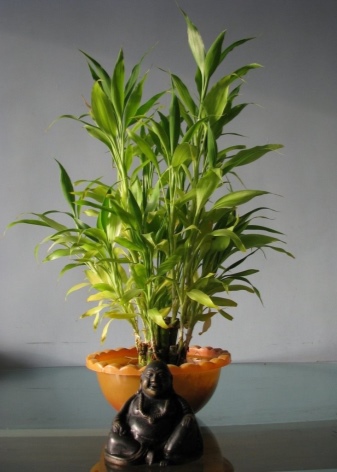
Sandera is a perennial houseplant that can be grown in all conditions. This flower is attractive not only due to the evergreen foliage painted in a bright color, but also to the beautiful shoots. Outwardly, dracaena looks like an ordinary palm tree, consisting of tall "columns" covered with bunches of foliage on top. Often from the stems a spiral and branch-branches can be formed, performing a decorative function... The flower has an excellent root system, thanks to which it quickly takes root during transplantation.
Dracaena Sander is considered a fairly tall plant and can grow up to 1 meter in length. Moreover, the length of its leaves does not exceed 25 cm, they are characterized by a dense structure, have a light glossy overflow and reach a width of up to 3 cm.
As for the color of the foliage, it often varies - in some varieties it can be light green, and in others it can be distinguished by a dark shade or yellow edging. In addition, there are stripes on the leaves. The flower is easily grown at home; unfortunately, it cannot please with flowering.


Home care
The main advantage of Dracaena Sander is its high endurance and undemanding care. It can be grown both in a pot and in an aquarium (in water), it is in this form that it is often sold. However, immediately after purchasing a flower, it should be planted in the soil (these are the standard conditions for its growth). If the design of the room provides for a water theme, then the plant can be placed in a spacious aquarium, having previously covered its bottom with decorative stones.
To grow a beautiful and healthy dracaena, it must be provided with certain conditions.
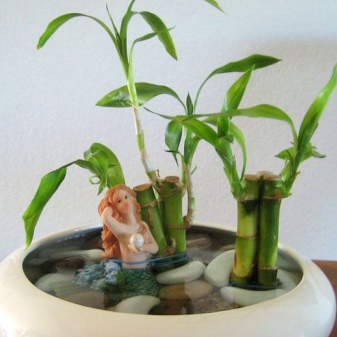
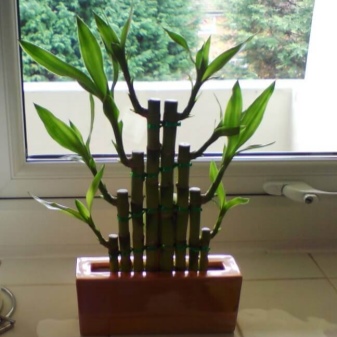
Lighting
"Happiness bamboo" prefers to grow in well-lit places, in addition, its appearance largely depends on the penetration of sunlight. Despite this, the flower can perfectly adapt to various conditions, so it will grow well even in rooms where only an artificial light source is present.
Depending on the level of illumination, the dracaena can lose its usual color, if it is not enough, then the sprouts and leaves become lighter, stretch up... There will be no other noticeable changes in the plant due to the lack of light.
Dracaena should also not be placed directly under the sun's rays, they can cause burns to it.
Thanks to these qualities, the flower is the main decorative item in many modern interiors, gives the design a touch of freshness and decorates any corner of the home with dignity.

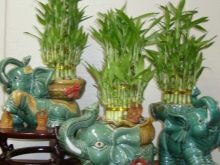
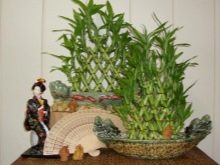
Temperature
Dracaena takes root well at any temperature, but still it should be borne in mind that she loves warmth. Therefore, when growing this "handsome", it is recommended to maintain the temperature in the room not lower than + 17ºС. The optimal temperature regime is from +20 to + 35ºС. In order for the flower to grow and develop normally, the room should be periodically ventilated.as fresh air has a positive effect on it.
Despite the fact that "pseudo-bamboo" is not afraid of drafts, it is undesirable to place it under the open sky or on a balcony.

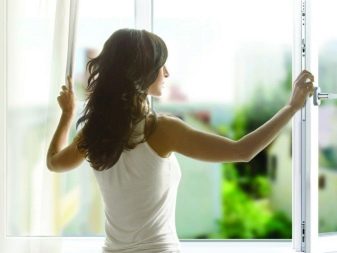
Watering
This type of indoor flowers is moisture-loving, since they can develop and grow well in water. Flowers are not afraid of frequent watering and stagnant moisture, while dracaena is usually grown in the ground, watering it as the soil dries. The humidity should be no higher than the average level, but if the soil in the pot dries up by more than 3 cm, then negative consequences are possible. Therefore, excessive drying of the soil should not be allowed..
As for the cultivation of "bamboo" in water, it means constantly maintaining the water at the same mark so that it completely covers the roots.
For normal plant growth, experts recommend increasing the water level by a few centimeters so that it covers not only the rhizome, but also 2-3 cm of the stem. If the liquid level is too high, the roots can fester, it is advisable to replenish water reserves every week.
The quality of water also plays a special role. For planting dracaena, use only distilled or pre-filtered liquid. Its temperature should match the temperature of the air in the room.
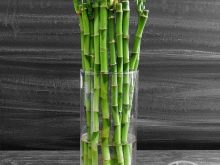
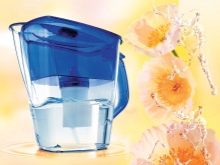

Air humidity
This indicator does not significantly affect the growth and development of dracaena. "Happiness Bamboo" feels great in a room with any humidity level, even low. In this case, the leaves of the flower must be periodically sprayed, it can also be additionally used as a natural humidifier for other indoor plants (if dracaena grows in water).
In addition, special attention should be paid to the purity of the flower; dracaena loves frequent wiping of the leaves with a sponge soaked in water. Thanks to such a simple procedure, it will be possible to get rid of the accumulation of dust and preserve its decorative appearance (the natural shine of the leaves).

Fertilizer
Dracaena Sander, which is planted in water, requires a special approach in feeding. According to many gardeners, the plant in such conditions does not at all need nutrition with minerals. But a lack of nutrients can cause the foliage to turn yellow, after which the decorative qualities of the flower will be lost and it will die. Therefore, in order to preserve the beautiful appearance of dracaena, it is necessary to feed in a timely manner by introducing mineral components into the water. To do this, it is best to use special products designed for this type of plant.
As for flowers that are grown in pots with soil, they are also fed with fertilizers that are rich in nutrients and stimulate growth. It is very important to maintain a certain interval between fertilization periods. As a rule, it is one month. The dosage is determined depending on the growing conditions of the dracaena and the season. For example, the "water palm" requires a small amount of fertilizer, feeding is also reduced in winter.
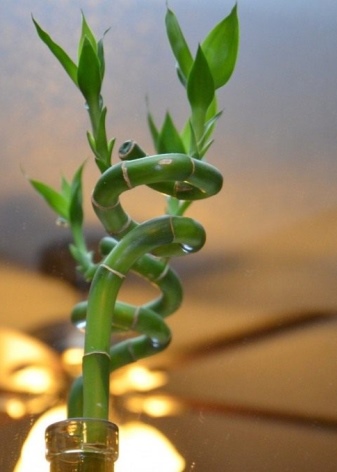
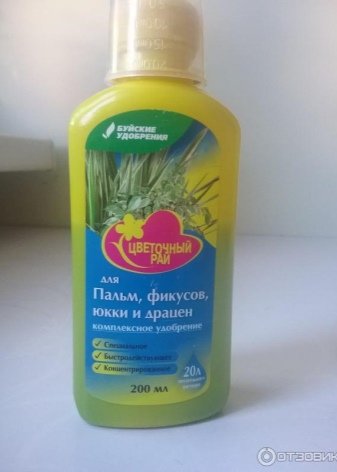
Pruning
Since dracaena Sandera is considered an ornamental plant, it must be pruned periodically. Thanks to this, the appearance of the flower will change for the better. After removing the old stems, new and beautiful shoots will appear on it.
“Happiness bamboo” is recommended to be pruned at the tops, as well as to make small cuts on roots near the water. At the same time, you should not be afraid to remove ugly stems (too branched and crooked), they will be replaced by young ones.
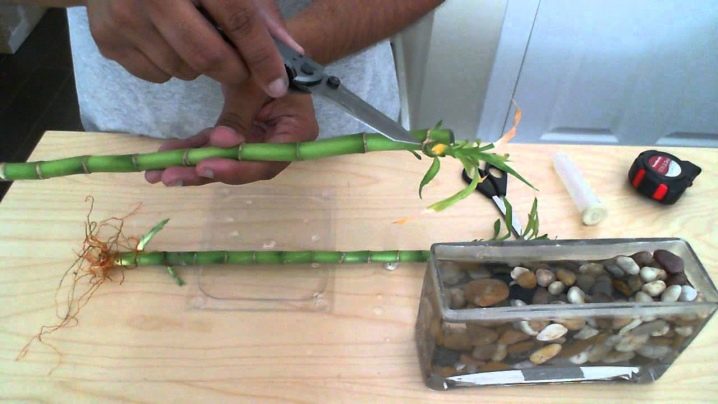
Transfer
Like all indoor plants, dracaena needs a transplant, which in no way depends on the growing environment (soil, water). Usually, the flower is transplanted at least once a year, but if it grows in water, then this is done as deposits form at the bottom of the planting container. The vessel itself can be used for further transplanting, and the water must be changed. First of all, carefully remove the plant from the container, then clean it thoroughly and wash the decorative stones that are placed at the bottom. Then the flower is placed in a clean container filled with clean, filtered water.
For dracaena that grows in the ground, the transplant must be performed in the spring if it is planned to place the flower from the soil into the water. To protect fragile stems from damage, you need to put decorative stones on the bottom.... They must be rounded, otherwise the sharp edges can damage the roots of the plant. Granulite and coarse sand are well suited for these purposes, they allow you to give shoots more stability.
An important role will be played in the transplant and the choice of vessel. It is best to purchase transparent containers (glass, vase). This will further emphasize the beauty of dracaena. It will become a real decoration item in the interior.

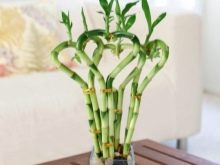

When transplanting plants into soil, special attention should be paid to the location of the drainage. It should take up no more than 1/3 or 1⁄4 of the volume of the container. Coarse river sand and pebbles are well suited as drainage... If you plan to transplant into transparent pots, then pebbles can be used, while the top ball of soil can consist of ordinary earth, sand, or a mixture of peat with a substrate.
If you properly care for the plant and provide it with all the necessary conditions for growth and development, then it will certainly thank you with a beautiful view. Since dracaena is a "non-capricious" plant, even a novice gardener can grow it.
Reproduction
Unlike other indoor crops, Dracaena Sander can only be propagated vegetatively (by cuttings). For propagation of the plant, cuttings are used, which have a length of at least 15 cm. To obtain planting material, the upper part of the stem is trimmed. Before planting, you must wait until roots appear on them (you can speed up the process by placing the sprouts in wet soil or water). It can also be used for planting and pruning stems up to 8 cm long, but they should have one dormant point.
In order for the planted stalk to quickly take root and not get sick, it needs to create a special temperature regime (warm).
If in the room where the planted plant is located, the temperature is from +23 to + 25 ° C, then after a few weeks it will get used to its new place and in the near future will be able to please with its beauty.
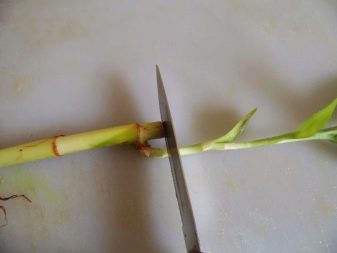
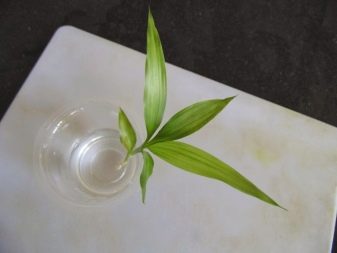
Diseases and pests
"Bamboo of happiness" is considered a plant resistant to various diseases and pests. Most often, the flower begins to hurt if it is not properly cared for. This mainly happens due to contamination of the water and leaves, and moving the pot to another place can become the cause of "sickness". If the dracaena is placed next to crops affected by spider mites or mealybugs, then it can also suffer from these insects, so this cannot be done. If pests have settled on the dracaena, then it must be treated with chemicals.
In addition, additional difficulties may arise when growing an ornamental plant.
- The tips of the foliage dry up. As a rule, it is accompanied by the appearance of dry edges. This is usually caused by non-compliance with air humidity control. In a dry room at a low temperature, the dracaena begins to fade.

- Leaves on the lower tiers turn yellow. With a slow course of such a process, you should not worry too much. This is a common occurrence. If the flower has sharply "turned yellow", then the fault is the lack of minerals. It is easy to fix the situation - you need to apply special fertilizers.
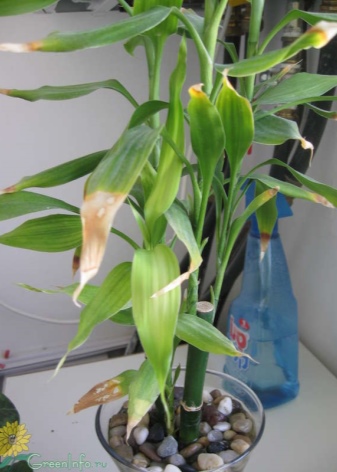

- Leaves are curled up. This is caused by the negative effects of low temperature in the room.
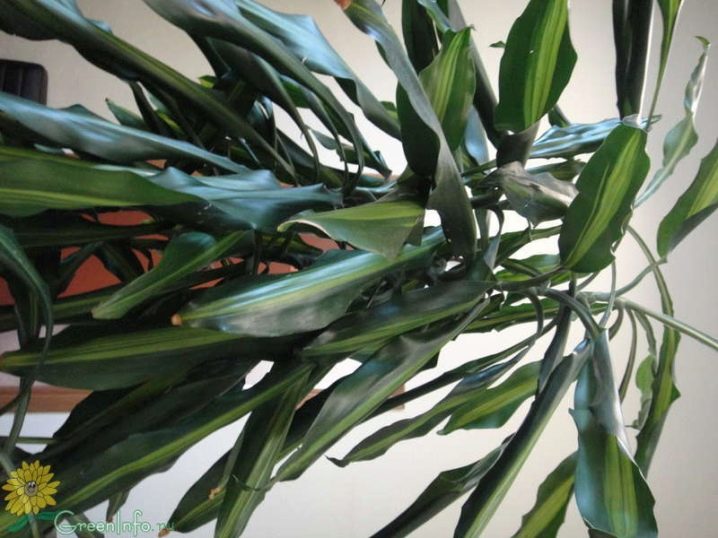
- The appearance of dry spots on the leaves. Dracaena in this case must be hidden away from direct sunlight.
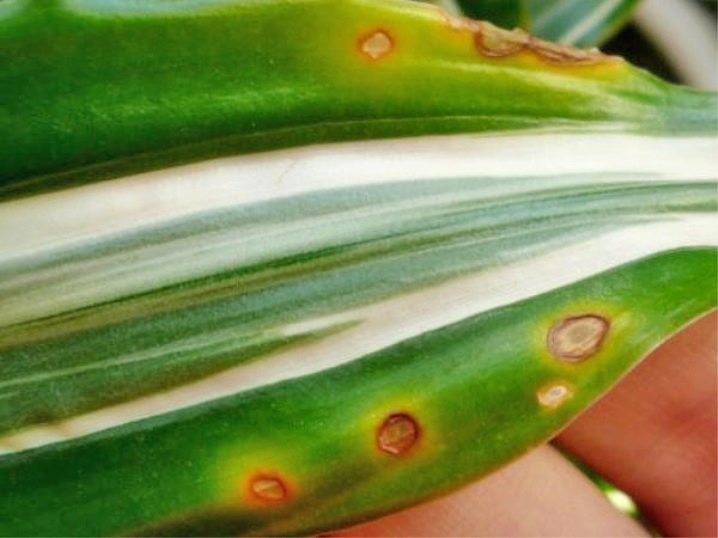
For more on caring for Dracaena Sander, see the next video.




























The comment was sent successfully.